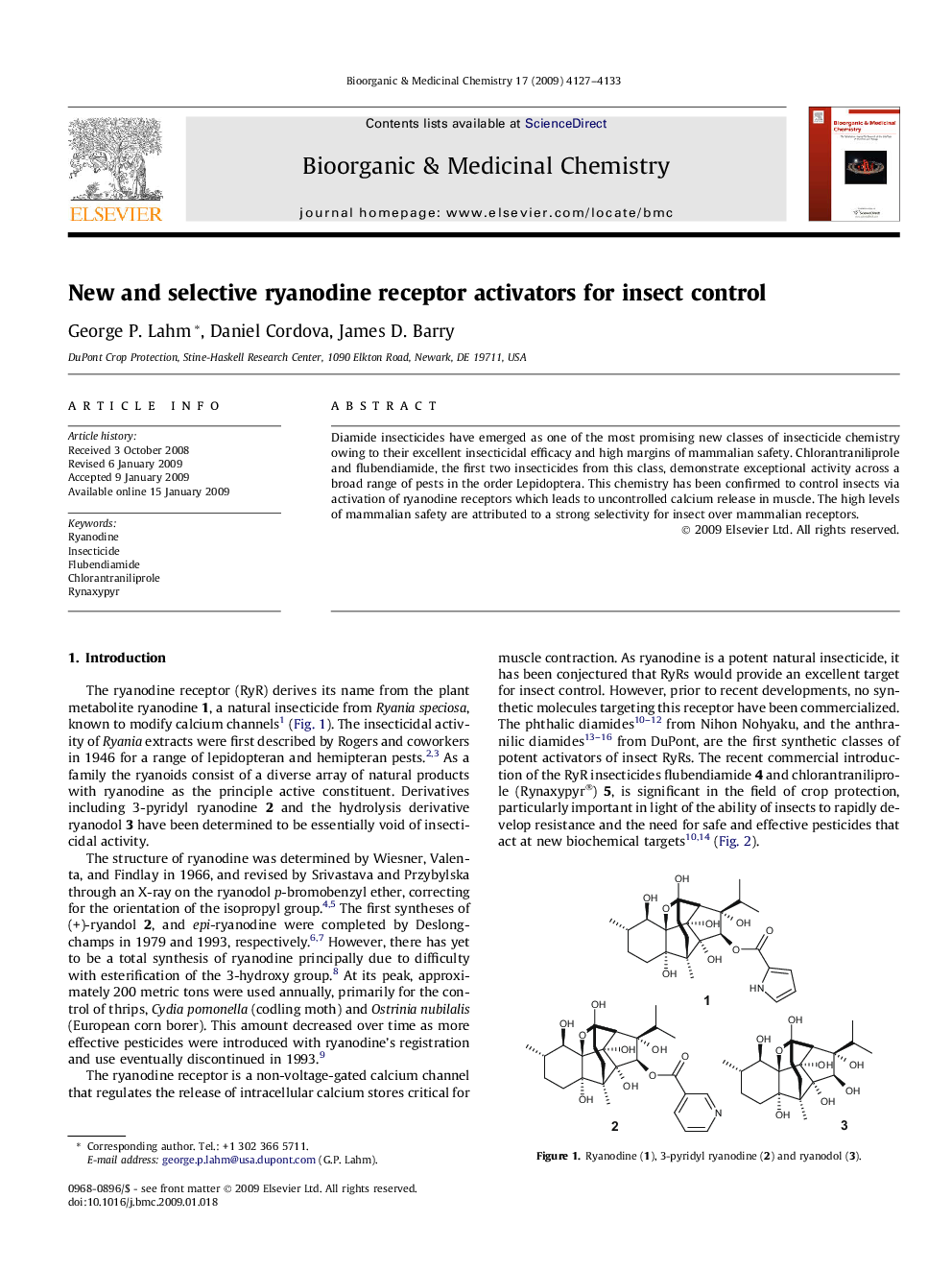| کد مقاله | کد نشریه | سال انتشار | مقاله انگلیسی | نسخه تمام متن |
|---|---|---|---|---|
| 1363303 | 981509 | 2009 | 7 صفحه PDF | دانلود رایگان |

Diamide insecticides have emerged as one of the most promising new classes of insecticide chemistry owing to their excellent insecticidal efficacy and high margins of mammalian safety. Chlorantraniliprole and flubendiamide, the first two insecticides from this class, demonstrate exceptional activity across a broad range of pests in the order Lepidoptera. This chemistry has been confirmed to control insects via activation of ryanodine receptors which leads to uncontrolled calcium release in muscle. The high levels of mammalian safety are attributed to a strong selectivity for insect over mammalian receptors.
Diamide insecticides have emerged as one of the most promising new classes of insecticide chemistry owing to their excellent insecticidal efficacy and high margins of mammalian safety. Chlorantraniliprole and flubendiamide, the first two insecticides from this class, demonstrate exceptional activity across a broad range of pests in the order Lepidoptera. This chemistry has been confirmed to control insects via activation of ryanodine receptors which leads to uncontrolled calcium release in muscle. The high levels of mammalian safety are attributed to a strong selectivity for insect over mammalian receptors. This paper reviews the chemistry, biology, and ryanodine receptor activity for these new insecticides.Figure optionsDownload as PowerPoint slide
Journal: Bioorganic & Medicinal Chemistry - Volume 17, Issue 12, 15 June 2009, Pages 4127–4133